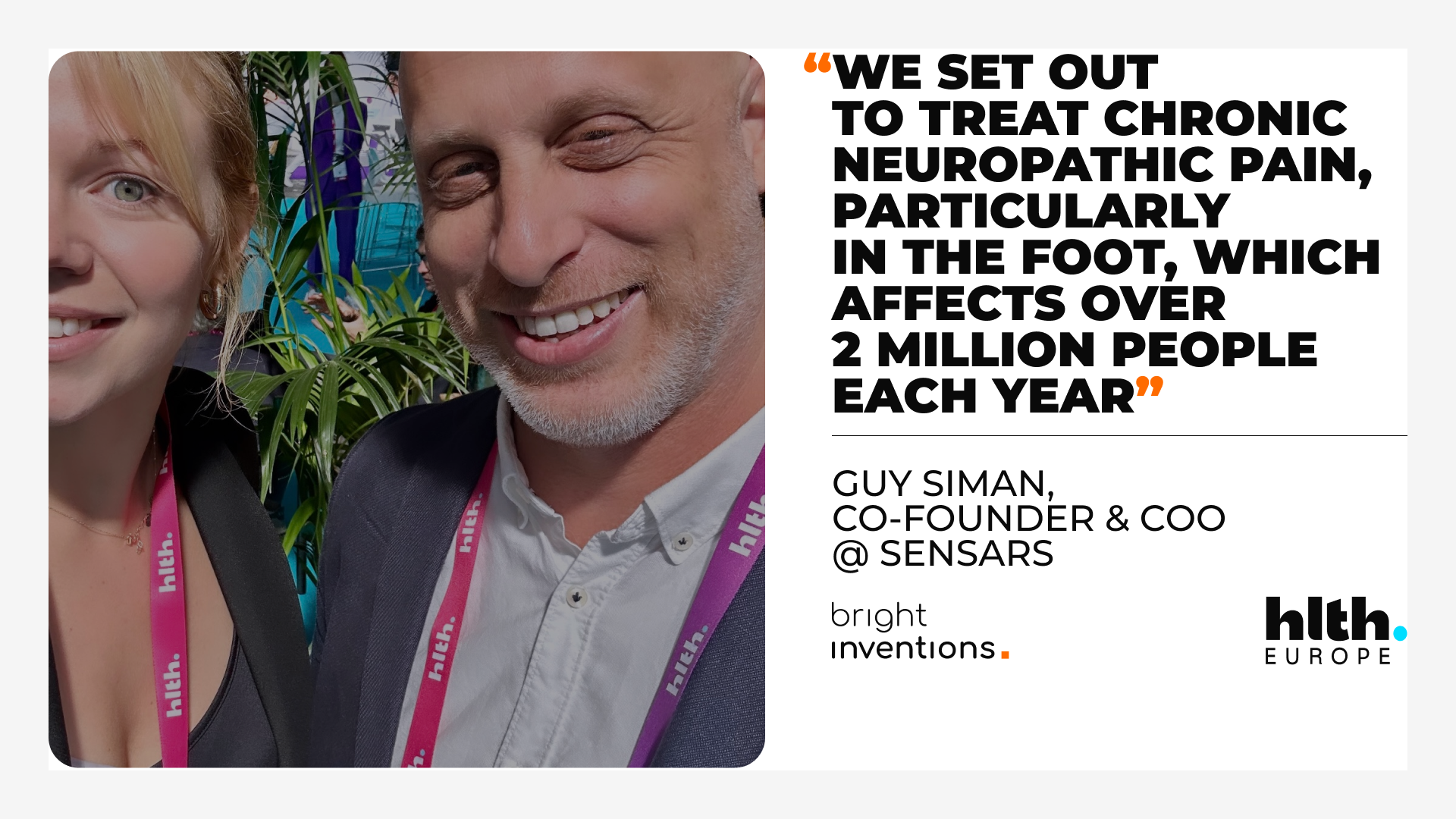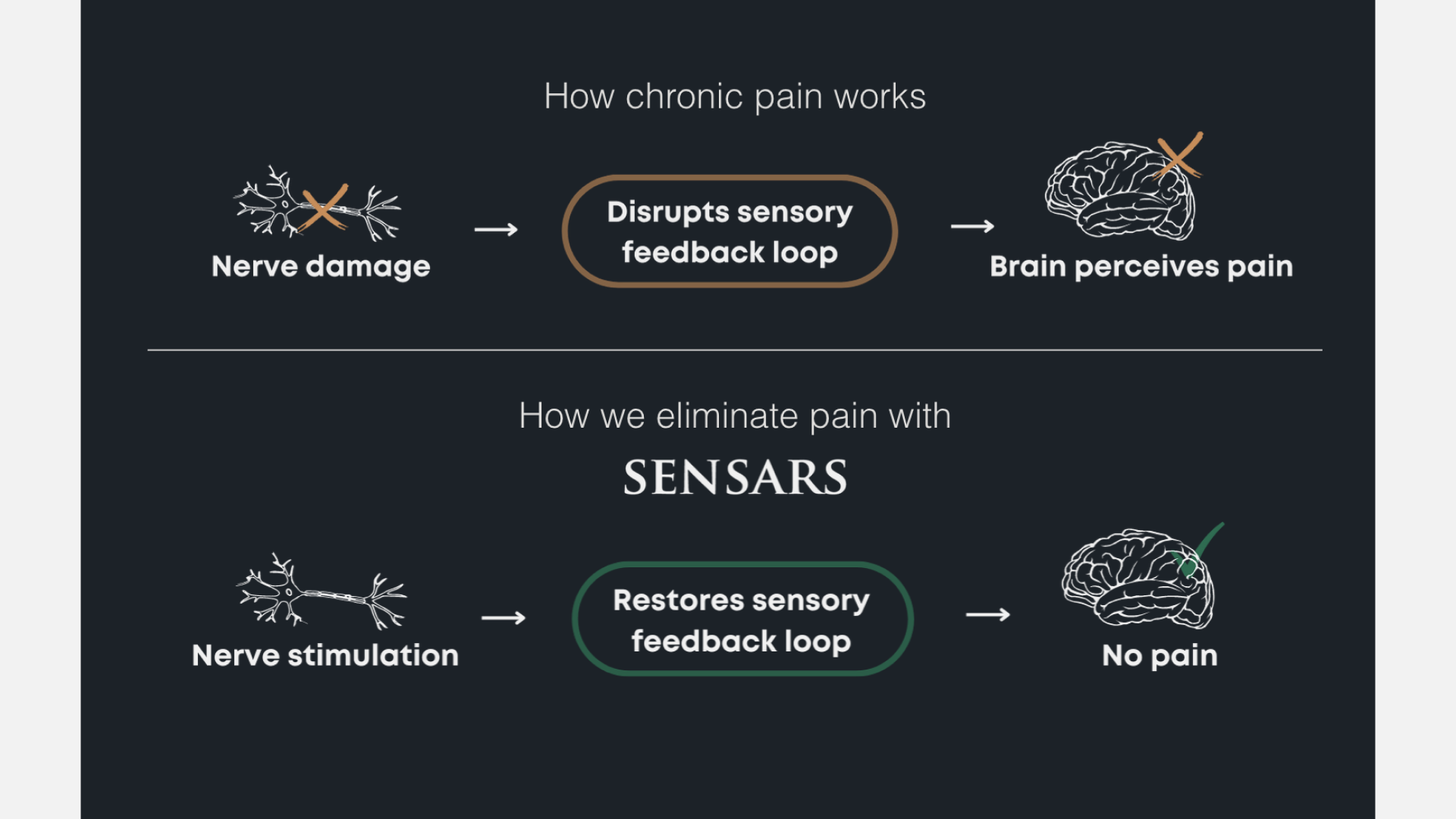Revolutionizing Pain Relief with AI in Healthcare: An Interview with Guy Siman of Sensars
Imagine a world where physical pain can be switched off in one medical procedure, without any side effects. Sounds like something from a science fiction movie? It’s not; it’s actually beginning to happen, thanks to Sensars, a startup based in Switzerland that is taking neurostimulation to another level. They're revolutionizing the field by directly interacting with peripheral nerves. Guy Siman, a founder of Sensars, shares his journey and insights behind this innovative solution in an interview with Agata Bielówka, conducted at the HLTH Europe conference in Amsterdam in June 2024.
Can you briefly introduce yourself and your solution?
Yes, so my name is Guy Siman. I'm a co-founder and Chief Operating Officer at a medical device company called Sensars, based in Switzerland. We set out to treat chronic neuropathic pain, particularly in the foot, which affects over 2 million people each year worldwide that are intractable to medication and other solutions. We're doing this through neurostimulation, but not just any ordinary neurostimulation. We're transforming the way neurostimulation works. Instead of placing a lead next to a nerve, we safely inject microelectrodes inside a peripheral nerve.

What inspired you to develop Sensars and focus on treating chronic pain?
Chronic pain, especially distal pain like foot pain, affects a huge number of people worldwide and often goes untreated. One major cause is diabetic foot, which is personal to me because of my family's history with diabetes. This was a major incentive. It's a huge unmet need globally. While it's not my first company, it brings a lot of satisfaction to help people who have such needs.
What makes your solution different from other similar solutions?
The major difference is our approach to the nerve. Instead of stimulating from beside the nerve, we go inside the nerve with multiple microwires. This allows us to access the inside of almost any peripheral nerve. For treating pain, we target the sciatic nerve for the lower limb, but we can also target the vagus nerve for treating epilepsy, inflammation disorders, or obesity. This intimate access to the nerve allows us to selectively choose the fibers we want to stimulate, which is what differentiates us.

source: https://www.sensars.com/
Is it just hardware or a combination of hardware and software?
It's a combination. The hardware is the major innovation, but we also have software elements. We developed specific biomimetic algorithms that, combined with our access inside the nerve, generate stimulation parameters that emulate natural sensations.
Is your technology on the market already?
No, it's not on the market yet. We've done a proof of concept with extraordinary results—100% response rate, decreasing pain in all patients by over 50% and restoring their sensation. We're now transitioning this early prototype into a commercial-like prototype for the next steps of clinical trials. After these trials and regulatory approval, we will hit the market.
Are you facing any regulatory issues or challenges?
Challenges, yes, but no major issues. We are a class 3 or PMA route device. As long as we follow the guidelines and standards, we should be okay.
What about technological challenges?
We have de-risked many technological challenges using our earlier prototype. Developing small electrodes that go inside the nerve, stay there, and provide stable stimulation is a significant technological challenge that we need to continue proving.
What trends do you see in health tech, apart from AI?
Making healthcare more accessible, especially through remote care, is a major trend. This was boosted during COVID-19 and is maintaining momentum. We, too, are going to facilitate remote access and monitoring to the patients’ progress of treatment.

Is there any medtech or e-health solution you follow and appreciate?
There are many, particularly in the field of neurostimulation. Interesting developments are happening around the brain and DBS (Deep Brain Stimulation), as well as mapping signals from the brain to improve wellness.
Do you have a favorite podcast or news site you regularly follow?
Yes, I regularly follow a podcast led by Dr. Andrew Huberman as well as MedTech Talks & Device Talks, centered around medical devices.
What do you do in your free time?
I wish I had more free time! I spend as much time as possible with my family and kids to compensate for lost time when I am away. That's what I do the most.
What are your future goals, personally and for your solution?
For our solution, I want to follow through on this development and bring it to people because it's transformative. We're raising our seed round now, and we have good clinical data to support it. Personally, my goal is to get a pilot's license by the age of 50.
That's impressive! Fingers crossed. Thank you for your time and enjoy the rest of the conference.
Thank you. You too.
Sensars aims to offer a groundbreaking solution for millions suffering from chronic neuropathic pain. The potential impact on the medical field and patient care is immense. We are keeping our fingers crossed as Sensars progresses through clinical trials and moves toward market introduction.
explore more industry insights for HealthTech startup owners

